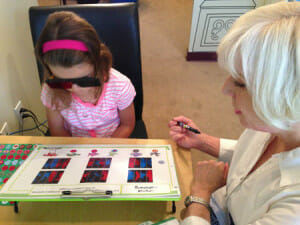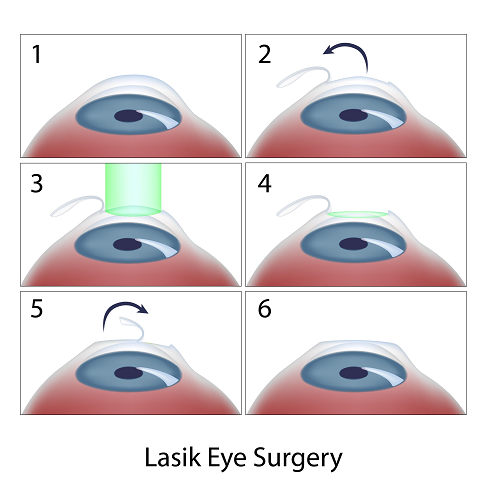
3D Vision
Three dimensional (3D) vision is not a new concept but it certainly is growing in popularity! It is not uncommon to hear of a new movie, videogame or electronic device which is being released in 3D or even a teacher who is utilizing 3D in the classroom. Recently studies have shown that focus, retention and attention span increase with the use of 3D presentations so it is likely that we will continue to see an increase in its popularity.
Why does this matter to us?
3D vision, also referred to as binocular depth perception or stereopsis requires both of your eyes and brain to work together to see the effect of 3D. Stereopsis is an ability that develops over time and children typically continue to develop this skill up until they are 5 or 6 and in some cases even a little bit older. As you might expect, individuals who are unable to see 3D or are uncomfortable during 3D presentations generally have unidentified visual problems. One of the significant advantages born out of the growing popularity of the 3D technology is the ability to identify previously undiagnosed conditions of the eye that can often times be treated or corrected. It is important to note that while vision screenings performed by your primary care doctor and school nurse do a great service, they are not a substitute for a visit with an optometrist as they lack stereo testing in addition to other tests routinely performed during a comprehensive eye exam. When you schedule an exam with Complete Family Eyecare, you will receive a series of tests including a stereo test to identify many of the common causes of 3D viewing challenges in addition to visual acuity.
If your answer to any of the following questions regarding 3D viewing is yes, please call to schedule an eye exam.
- Do you experience eyestrain of headaches during or after viewing?
- Do you feel nauseated or dizzy during or after viewing?
- Are you more comfortable viewing 2D TV or movies instead of 3D TV/movies?
- Is it difficult for your eyes to adjust back to normal after watching 3D TV/movies?
- Do other people seem to be enjoying the 3D experience more than you?

Vision Therapy
Vision therapy is a type of physical therapy for the eyes and brain. In many cases, vision therapy is a highly effective non-surgical treatment for many common visual problems such as lazy eye, crossed eyes, double vision, convergence insufficiency and some reading and learning disabilities. The goal of Vision Therapy is NOT to strengthen eye muscles. Your eye muscles are already incredibly strong! Vision Therapy uses specialized medical equipment and is supervised by a doctor of optometry. (Vision Therapy is not to be confused with any self-directed program of eye exercises which is or has been marketed to the public.)
The first step in any Vision Therapy program is a comprehensive eye examination where your optometrist will determine if vision therapy is likely to improve your visual problems. If vision therapy is recommended a customized plan for therapy will be made for you.
Often vision therapy requires a variety medical devices including prescription lenses, therapeutic lenses, prisms, optical filters, eye patches or occluders, electronic targets with timing mechanisms, computer software, vestibular (balance) equipment and more. Therapy is conducted in our office once or twice per week in 30 to 60 minute sessions. These sessions are aimed to be interactive and fun while working to train your eyes. At times these sessions are supplemented with procedures done at home between office visits (“homework”).
The goal of visual therapy is to help our patients develop or improve fundamental visual skills and abilities. We aim to enhance visual comfort and improve the efficiency of their eye function.

LASIK
LASIK, Laser-Assisted In Situ Keratomileusis, surgery is intended to help patients reduce their dependence on glasses or contact lenses. The first step with LASIK surgery is to determine if you are a candidate for surgery. If you are not a candidate for LASIK surgery, there are other refractive procedures available that may be able to help you decrease your dependence on glasses or contact lenses. Some of these options are PRK, Photorefractive Keratectomy, Phakic IOLs, and more. To determine which procedure would be best for you, come in and speak with Dr Gray about it today.
The LASIK Procedure- a step by step guide to the procedure:
- Anesthetic (numbing) drops are applied to the eye.
- A protective flap is created in the cornea and gently lifted by the surgeon, revealing the inner corneal tissue. Today’s technology allows our surgeons to be incredibly precise using lasers to create this flap.
- Computer-controlled pulses of cool laser light are applied to the inside of your cornea. The inner cornea is reshaped with the laser to correct for your contact lens or glasses prescription.
- The surgeon gently replaces the flap and aligns it to its original position. This flap tissue heals naturally and securely.
- Some patients may feel slight irritation for a few hours, but most are quite comfortable after a nap and rest.
